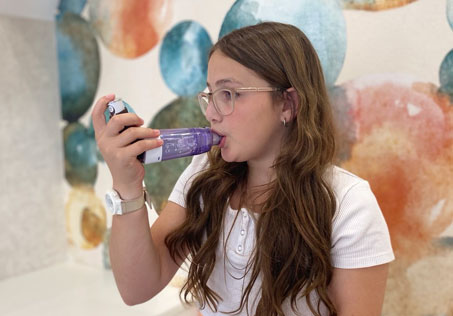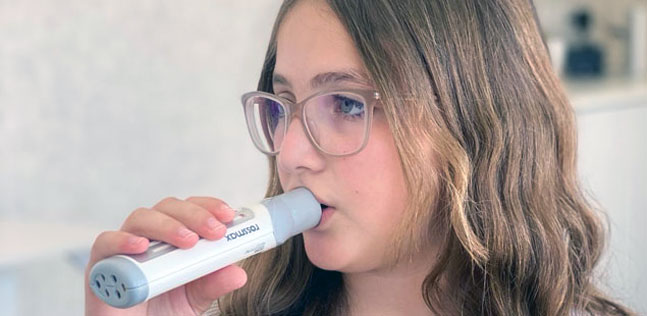Asthma


The Global Asthma Report indicates that the global prevalence of asthma is 9.1% among children, 11.0% among adolescents, and 6.6% among adults.
Asthma is a chronic lung disease affecting people of all ages. It is caused by inflammation and muscle tightening around the airways, which makes it harder to breathe.
Symptoms can include coughing, wheezing, shortness of breath and chest tightness. These symptoms can be mild or severe and can come and go over time.
Although asthma can be a serious condition, it can be managed with the right treatment. People with symptoms of asthma should speak to a health professional.
There are different triggers for asthma:
- infections
- exposure to parental smoking
- aeroallergens (dust, pollen, mold, pet dander)
- temperature changes especially cold weather
- exercise
In pre-school children the diagnosis can be challenging as there are no diagnostic tests to perform. The good news is that 60% of children with pre-school wheeze do not progress to asthma and their symptoms resolve by school age.
In children 6 years and above we can perform a lung function test called spirometry. This can objectively assess the expiratory function of your child’s lungs. This is a test we perform in our clinic and we use it for diagnosis and assessment of response to treatment.
If there is suspicion of asthma triggered by specific aeroallergen we will perform skin prick tests to assess the triggers.
Around 80% of asthmatic patients have allergic rhinitis (AR) and it is important to control symptoms of AR as if not well controlled it can lead to asthma exacerbations.
Cornerstone of asthma management is the use of inhalers. There are different types of devices and your allergist will guide you to select the one appropriate for your child.
Treatment failure can be due to the wrong technique for delivery of the inhalers.
Traditionally the inhalers are separated into two groups: a. relievers that contain short acting bronchodilator that opens up the airways and b. preventers which contain inhaler corticosteroids (ICS) to reduce the inflammation and/or a long-acting bronchodilator (LABA) to keep the airways open.
More recently the treatment plan particularly in patients over 12 years moved to the MART (Maintenance and Reliever Therapy) which is an asthma treatment plan where you use one combination inhaler both as a reliever and preventer inhaler.
In recent years there has been a dramatic shift to the use of biologics in the treatment of difficult asthma. Omalizumab is a monoclonal anti-IgE antibody for patients over 6 years of age that do not respond to inhaled treatments.
References:
The British Thoracic Society (BTS), National Institute for Health and Care Excellence (NICE) and Scottish Intercollegiate Guidelines Network (SIGN), have produced a joint guideline on the diagnosis, monitoring and management of chronic asthma. The guideline can be accessed via this link: Joint Guideline on Diagnosis, Monitoring and Management of Chronic Asthma NG245.
